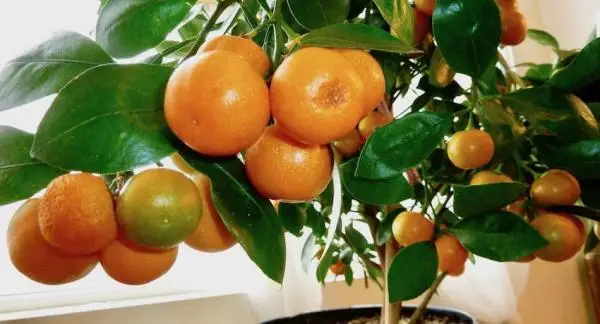Planting an orange, mandarin, or lemon tree in a pot and growing healthy is not only possible but also convenient in places where the soil is not adequate, its watering is problematic or there are cold winters, for example.
They are so beautiful and aromatic that they constitute an excellent alternative to ornamental plants, with that extra that the fruits suppose, in addition to their dense foliage, their fragrance when flowers come out … All of them are very attractive characteristics that add to the ease of its cultivation in pots, and there are also dwarf species that adapt more easily.
Advantages such as the choice of land, greater control of irrigation, and being able to better protect them in winter are added to the possibility of finding a location where they look, either indoors, a balcony, terrace, garden, or small orchard.
A land that drains
Ensuring good drainage is essential for these trees, which is why clay soil is not suitable for them. Fortunately, we can choose the right proportion of different types of soil in the pot (for example, about 45 centimeters in diameter by the same height).
Although they are not demanding in terms of soil, it is advisable for it to drain, avoiding clay soils, and looking for those more permeable, slightly acidic (pH 6 -6.5). Soil should be added to the pot by mixing two-thirds of black soil or compost, one-third of mulch and coarse sand, as well as expanded clay at the bottom to drain.
Regular watering and fertilizer
Watering in pots, better if it is with collected rainwater instead of tap water, it should not be as abundant as in the ground and we will make it coincide with the soluble fertilizer. We will avoid flooding the pot when we water and the frequency can be twice a week in summer and once in winter. Keep in mind that in pots the roots are close to the surface, so we should not let the substrate dry out.
For its part, the subscriber can be done three times a year, from spring to autumn. Basically, they need to be fertilized before flowering, in June, and in September. We will apply a special fertilizer and in the soil, we will add organic matter in autumn to improve the quality of the soil.
Seek shelter during the winter
Indeed, growing these trees in pots allows them to seek shelter during the winter. To do this, either they move, ideally to interior spaces where they do not lack light, taking them out in the sun at the central hours of the day, if possible.
In any case, it is important that it is not too hot, have the heating turned off and facing south and next to the windows, ventilating from time to time in case of not taking them out. The important thing is to avoid temperatures typical of frost and look for places where they are not below zero degrees. In particular, the youngest trees must be carefully cared for.
Another possibility is to put a kind of shelter on them that allows the plant to breathe, while the light can pass through. In short, it is a matter of covering with a fine micro-perforated fabric that is specifically marketed to protect plants from frost, either on the fruit tree or using a frame-type structure. Otherwise, we could choose to spray water with lime (slaked lime) on the leaves to protect them from the cold.

More vulnerable to sun and wind
Citrus fruits grown in pots dry and freeze more easily than those planted in soil. Therefore, let’s take advantage of their mobility and smaller size to be able to move or cover them when temperatures are going to approach zero. Its optimum temperature is between 17 and 28 degrees Celsius.
Likewise, although they are tropical subspecies, it is important to bear in mind that the sun and wind affect them more easily when programming the frequency of irrigation or, for example, especially windy seasons. The wind, in particular, will promote the fall of the fruits and the staining of the leaves.
What to do with pests
Citrus pests include whiteflies, aphids, spider mites, or mealybugs. If we do not want to use insecticides, spray the leaves with water with potassium soap and/or neem oil. Finally, if we do things right and our citrus grows properly, after two or three years it might need a new pot.

